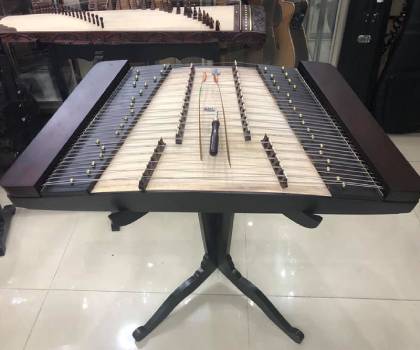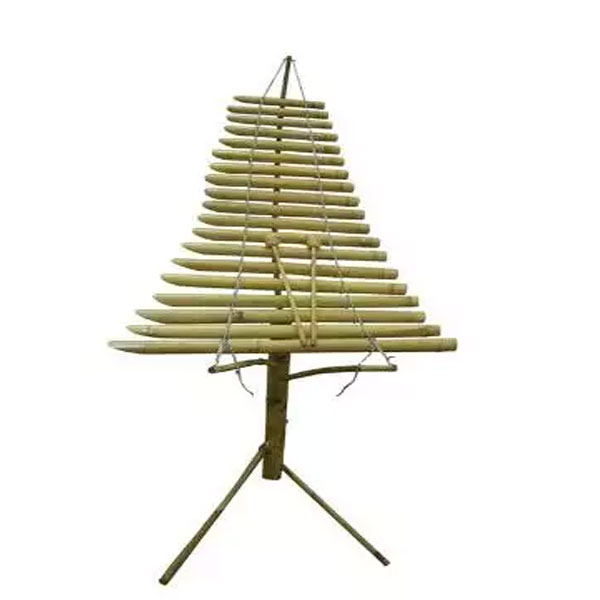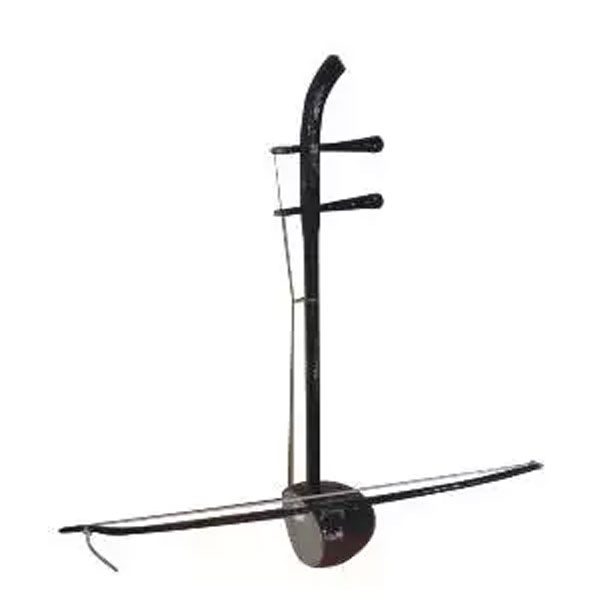Top 10 most unique traditional musical instruments in Vietnam
Vietnam is a country with an extremely rich and diverse treasure trove of traditional musical instruments. That treasure was formed throughout the journey of life and the long history of building and defending the country. There are musical instruments created on the spot with indigenous characteristics, there are musical instruments imported from many different sources but have been nationalized and localized to suit the musical language and musical aesthetics. Vietnam. Speaking of national musical instruments, it must be affirmed that our country has a very diverse and rich treasure trove of traditional musical instruments. Each instrument has its own character, all its beauty and sound create the unique character of the music. Next, let’s learn about the most unique musical instruments in Vietnam.
Monochord
Dan Bau or Doc Huyen Cam is a Vietnamese string instrument. Bau lutes are divided into two types: bamboo body lutes and wooden box lutes. The instrument has only one string, the length of which runs throughout the body of the instrument. The strings were made of silk, later replaced by iron strings, and the neck was made of bamboo in the past, but is now often replaced by buffalo horn.
The gourd is made from dried gourd shells or wood shaped into a gourd. The tuning shaft is made of bamboo or wood, placed close to the player’s side. The guitar pick is made from a string or bar, has a pointed tip and is made of cotton. It is this cotton tip that makes the guitar sound warmer. Dan Bau is popular in traditional Vietnamese musical instrument orchestras.
Bamboo flute
Từ xưa đến nay, sáo trúc luôn gắn bó với đời sống văn hóa, tinh thần của người Việt Nam. Vật liệu để làm loại nhạc cụ này là kiến trúc hoặc tre có đường kính khoảng 1,5cm và chiều dài 30cm. Thân ống được khắc phục một lỗi có viền gà và có lỗi 6 hoặc 10 lần nhấn.
Báo cấu trúc có thể diễn đạt nhiều sắc thái cung cấp cảm xúc với âm vực rộng rãi trong hai quãng tám. Âm sắc tươi sơn, trong sáng mẹo nhớ đến khung cảnh đồng quê Việt Nam Yên Bình. Cấu trúc có thể hòa trộn biểu diễn nhiều bài bản, phức tạp, cũng có thể hòa trộn cùng dàn nhạc cổ truyền, giao hưởng, nhạc nhẹ, thính phòng.
Erhu
The erhu or zither is a type of string instrument, played with a bow. The structure consists of five parts: neck, soundboard, fingerboard, bridge and strings. The erhu has a wide range of more than 2 octaves, the sound is bright, clear, and soft.
The erhu has quite a variety of performing techniques with fingers stroking, tapping, and vibrating. This is an indispensable instrument in orchestras such as: Nha Nhac, Bat Am Ward, Chau Van, Cheo, Tuong, Cai Luong bands. Nowadays, the erhu is also used in sad songs or hometown music.
Zither
The zither has a trapezoid-shaped surface made of light and porous wood. The bridge and sides of the guitar are made of hard wood. The left neck has 36 hooks to hang the strings, the right neck has 36 shafts to tune the strings. The strings are made of metal, the rod is made of two thin bamboo sticks. The sound range of the tam sixteenth is quite wide, about nearly 4 octaves.
The musician uses two thin bamboo sticks to tap the strings to create sound. The zither plays an important role in orchestras for Cheo and Cai Luong stages. The instrument can accompany singing, soloing and participating in a general ethnic orchestra.
Khèn
Khen is a wind instrument with a quite complex structure, consisting of many bamboo pipes arranged side by side. One end goes through the banana-shaped gourd to make a resonator box. This musical instrument is quite familiar to the Thai, Muong, H’Mong ethnic groups… The Muong people play the flute to accompany singing, the H’Mong people use the flute to communicate between men and women.
The H’Mong Khen has 6 pipes, the Thai Khen has 12 pipes bundled into 2 rows and is called raft Khen. The flute has a thin and brittle tone, each tube emits a certain tone. Inside the tube is a tongue made of thin copper or silver. The Khen Bu is a multi-voiced musical instrument with a wide range of about 1.5 octaves and a long-lasting sound.
Gongs
It is a musical instrument belonging to the autologous family, appearing since the Dong Son brass culture. Gongs are cast from copper alloy mixed with tin and lead. Those with knobs are called Gongs, those without knobs are called Gongs. The louder the gong, the deeper the sound; the smaller the gong, the higher the sound.
Gongs are present in the music of most Vietnamese ethnic groups. Gongs are associated with the Central Highlands as an indispensable thing in every human life cycle, Central Highlands gong music is an artistic value that has been affirmed in social and cultural life.
T'rung
The T’Rung lute belongs to a family of musical instruments that are naturally heard in the Central Highlands. In folk music, the instrument only has 5-7 pipes, cut to different lengths. A professional T’Rung instrument has about 12 – 16 pipes arranged in rows on the instrument stand. These tubes are connected to two parallel strings to form a string.
When playing the instrument, people use two cloth-covered sticks to tap on the pipes. The instrument has a wide sound range of nearly 3 octaves. You can play the same sound or overlap sounds, but the two notes must be an octave apart. Big and long pipes emit low sounds, small and short pipes emit high sounds. The timbre of the T’Rung instrument is quite unique, the sound is not loud or far away but is quite special.
Stone instrument
The stone lute is the oldest percussion instrument in Vietnam. Each stone bar has a different size and shape, crafted using a rudimentary tapping method. Big, thick stones give low sounds, small, thin stones give high sounds. The materials used to make the guitar are stones found in the South Central and Southeast regions.
Inanimate, inanimate stones are magically crafted into musical instruments. From those stones, the voice of the great Central Highlands still echoes today. The sound of the instrument is like the majestic echo of the mountains and forests, replacing words and consolation during happy and sad times in life.
Đàn gáo
The dio lute, also known as the dan ho, is a bowed musical instrument developed from the erhu. The dipper is larger and longer than the erhu but is quite similar to the Chinese harp in terms of features. The dio lute has a deeper sound than the erhu but is fuller, more spacious and solid. The timbre of the dipper is beautiful, warm but slightly deep, bringing deep emotions.
The Gao instrument is often used in elegant music orchestras, Cheo stages, Tuong plays, and Bat Am wards. This is also an instrument that plays an extremely important role in Xam singing, accompanying the middle and low voices. The biggest difference from the erhu is that it does not appear in the royal orchestra or the southern amateur orchestra. However, the Gao and Erhu always go hand in hand in Cai Luong, traditional stage orchestras and ceremonial orchestras.
Đàn đáy
Bottom lute, also known as Vo De Cam, is a musical instrument with 3 strings, a very long handle and a large hole on the back of the soundboard. This is a traditional Vietnamese musical instrument, not only unique in shape and sound, but also cleverly combined with other musical instruments, creating the famous form of ca tru. The day instrument is used in Ca Tru singing and A Dao singing along with the drum and drum.
The bottom lute has 4 main parts: Elbow, neck, headstock, and strings. The bottom lute has a wide range of more than 2 octaves, the timbre is similar to the Korean geomungo, warm and sweet and can express deep emotions. The sound of the fiddle is soft and sad. This type of instrument is equipped with 7 equally divided chords, so when singing low or high, the artist does not need to rewind the strings but just needs to quickly change the playing position.























